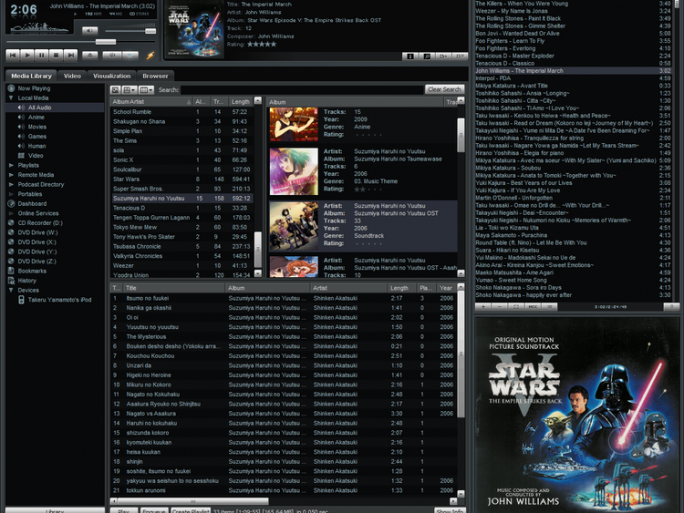Tales In Tech History: Winamp

Cross platform media player that formed part of the MP3 revolution in the 1990s and early 2000s
Earlier this month Silicon UK examined the impact of the Apple iPod, but no examination of digital audio would be complete without also reviewing the impact of Nullsoft’s iconic media player Winamp.
Winamp (for the few that don’t know) is a media player designed for multiple platforms including Microsoft Windows, Mac OS and Android.
The software was hugely popular among its fanbase thanks to its ease of use, its customisation capabilities, and its strong plug-in architecture. Another bonus was the fact that its developers actually listened to (and took action) after negative feedback from its community.
Early Days
Winamp was created back in April 1997 by Nullsoft’s Justin Frankel and Dmitry Boldyrev for Windows
The Winamp name was derived from the AMP MP3 decoding library, originally written for the Unix OS. It should be noted that Nullsoft had previously used the library in DOSAmp (an early MP3 player for DOS).
Winamp wasn’t the first MP3 player for Windows. The was Winplay3, released in 1995, and it became popular thanks to its bundling with pirate CDs full of bootleg MP3s.
Into this arena Winamp arrived in April 1997. This early version was extremely basic, but version 0.92, released as freeware in May 1997, was much more recognisable as Winamp, with the standard Windows frame and menu bar and glowing green lights.
Version 1.0 was released in June 1997 and completed the classic look of Winamp with the addition of graphical equaliser, a playlist editor, and a simple frequency analyser.
In the mid to late 1990s the developers continued to evolve Winamp, and major revisions included 1.4 and 1.5, which added a number of user interface and usability improvements, as well as an oscilloscope to display a waveform of the currently playing track.
HTTP Streaming was also added to cater for the arrival of Internet Radio stations.
Development Challenges
But there were controversies associated with the development Winamp.
For example with version 1.5 Nullsoft changed the license from freeware to shareware. This meant that users had 14 days to use the software free of charge, but thereafter had to pay a $10 fee to use it. The good news for the developers was that many decided to pay this modest fee.
Winamp 1.6 meanwhile delivered the software’s legendary customisation ability thanks to plug-in support.
Nullsoft as a company gained official registration in 1998 and the Winamp software began to deliver good financial rewards for its developers, thanks to Winamp’s reputation as the most full-featured mp3 player available on the market.
But more trouble was looming and in March 1999 PlayMedia filed a federal lawsuit against Nullsoft.
Playmedia was granted an injunction by Federal Judge, however the lawsuit was soon settled out-of-court with licensing and confidentiality agreements. As a result, Nullsoft switched to an ISO decoder from the Fraunhofer Gesellschaft, the developers of the MP3 format.
Nullsoft was bought by AOL in June 1999 for $80m, and by June 2000, the media player surpassed 25 million registered users.
User Feedback
In August 2002 the next major version (WinaMP3) marked its separation from the Winamp 2 codebase) by the spelling of WinaMP3. It also offered many features including a complete rewrite of its codebase and a media library.
But version 3 was not popular among users as it removed support for legacy plug-ins and skins, and users complained the new software was bloated. Indeed, many users reverted to Winamp 2 in protest.